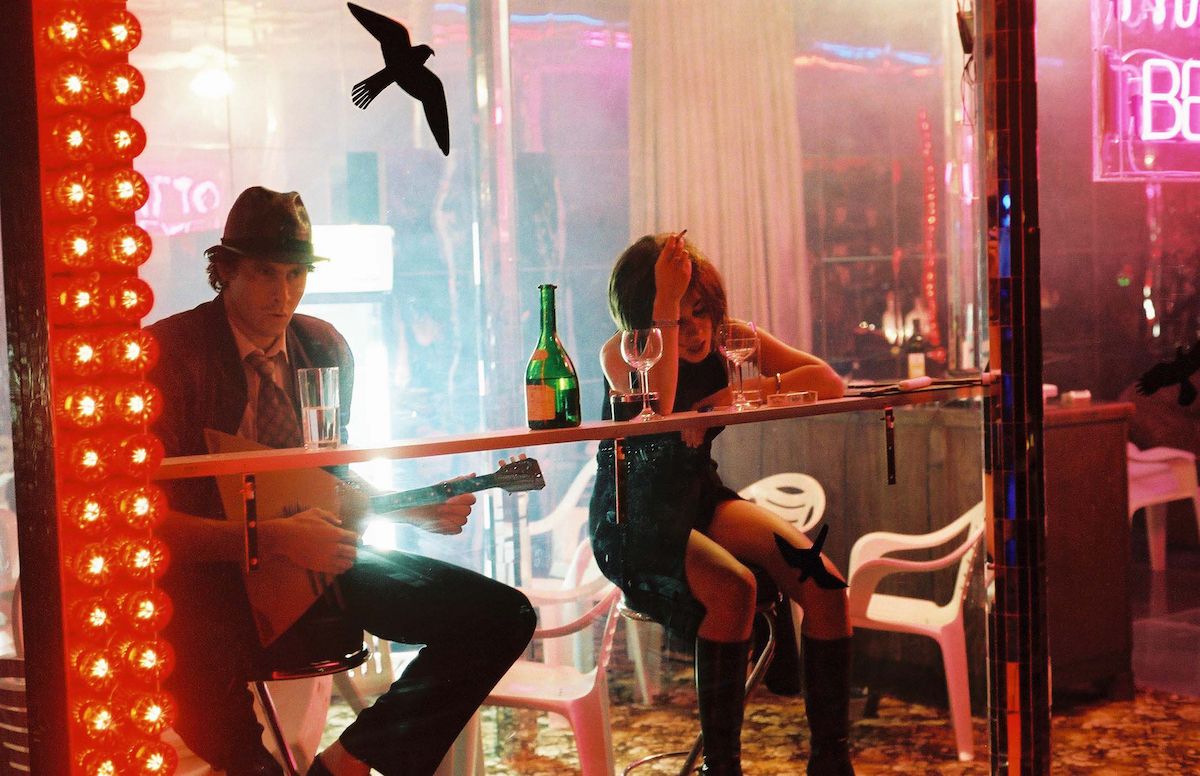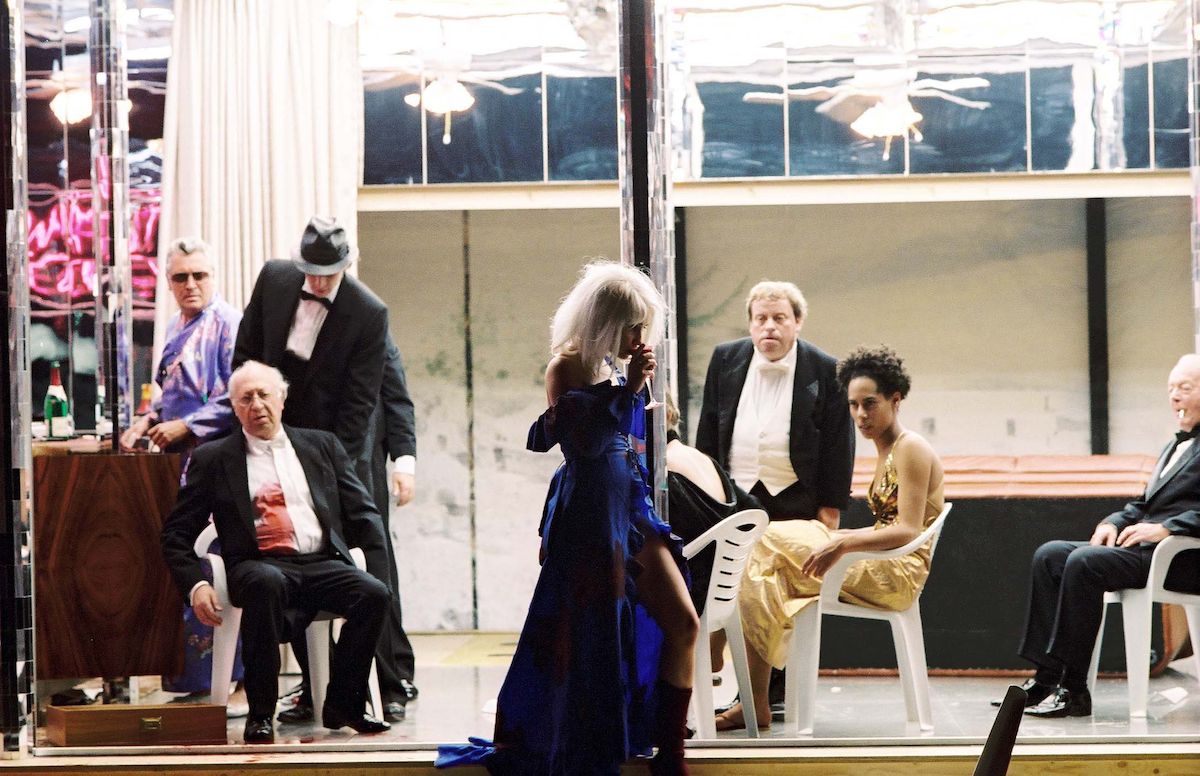
In Mikhail Bulgakov's The Master and Margarita the devil comes down to Moscow, leaving behind a trail of devastation wherever he or his assistants Koroviev, Azazello and Behemoth, a big black cat that walks on its hind legs, set foot. His first victim is Mikhail Alexandrovich Berlioz, chairman of the board of one of Moscow's main literary associations.
The devil introduces himself to Berlioz and his companion, the poet Homeless, as Professor Woland a specialist in black magic. He listens with indignation when Berlioz and Homeless deny the existence of God, Satan and Jesus. When the conversation turns to the mortality of man, the devil tells Berlioz, who listens to him in mocking disbelief, that his head will be cut off by a woman. A moment later Berlioz slips in the sunflower oil that Annushka had spilled when she dropped the bottle. He gets underneath a tram-car, whose female driver was unable to stop in time and his head goes flying. And this is only the beginning.
In a second storyline Bulgakov tells the story of Margarita's love for an unnamed writer, referred to as the Master, who cracked up after his first novel was rejected by a publisher and who was subsequently publicly denounced by various literary critics. In his novel the Master recounts the events on the day of and following the crucifixion of Jesus. In his version Pontius Pilate suffers from headaches and feels guilty about sentencing Jesus to death. Because of a holy day one convict can be released, but to Pontius Pilate's dismay the high priest of Jerusalem does not pick Jesus but another convict. To release himself of his guilt he has Judas murdered and has the blame put on the high priest.
The story of Pilate constitutes a third narrative parallel to the main storyline and is neatly interwoven into the rest of the novel. In the final chapters all three storylines come together when it turns out that Satan is not such a bad guy after all and the Master and Margarita are reunited.
The Master and Margarita is a magnificent novel. It is hilariously funny and on par with Joseph Heller's Catch 22. It is a brilliant satire of…., but this is not a review of The Master and Margarita, but of Frank Castorf's play of the same title. How do you adapt for theater a book set at different locations and during different time periods, in which witches fly on brooms and someone's body disappears from his suit, which continues performing its daily duties?
The stage design by Bert Neumann is truly ingenious, even though it is essentially based on the same idea as the design for Dämonen, Erniedrigte und Beleidigte and various other productions by Frank Castorf. The middle of the stage is occupied by some sort of a container, the left side of which is a cheap diner with plexiglass walls, while the right side functions as a living room. On top of the container is a big video screen, to the right of which there is a small room that can be reached by a staircase to the side of the container. Inside the diner a door gives way to a bedroom, which also houses a shower, or so we learn from the video screen. Behind the container another set has been built where the Pontius Pilate scenes are played. These we only see on video. The container holds many more such secrets that are revealed during the performance.


Some scenes have been pre-recorded, such as the one in which Berlioz’s head is chopped off and the one in which Margarita, having turned into a witch after applying some of Azazello's cream, flies through nightly Moscow smashing the windows of the apartment of the critic who destroyed the Master's career. In some scenes you can see the actors sitting inside the diner while their heads are filmed in close-up and projected onto the video screen. In other scenes stage and video show different events as when Margarita sits at the bar sipping from a glass of lemonade while the screen shows a scene from the Master's novel about Pontius Pilate. In scenes such as these Castorf's theatrical adaptation perfectly complements the original novel.
Der Meister und Margarita is another one of Castorf’s four-hour shows. About two-thirds into the first half, the performance lost momentum only to regain it again after the interval. During those 45 or so minutes there was still enough happening on stage but it didn't seem to be going anywhere.
Frank Castorf is at his best when he portrays the many dimensions of confusion, mixed with anger, frustration, resignation, disbelief or joy.
Following the incident with Berlioz, Homeless, whose real name is Ivan Nikolaevich Ponyryov, chased Woland through the streets of Moscow, but without managing to get any nearer. He ends up in a psychiatric clinic after being arrested for getting into a fight at the Writers Association.
In one scene the doctor in the psychiatric clinic climbs into bed with Ivan Nikolaevich. The doctor tells him that he believes Ivan Nikolaevich is normal and is willing to let him go. All Ivan Nikolaevich has to do is tell him that he is normal and what he is going to do after his release. Ivan Nikolaevich says that he will go straight to the police. In your pyjama bottoms, the doctor asks? And what are you going to tell the police? Ivan Nikolaevich hesitates a bit, but then continues saying that they must arrest this man, because he knew in advance that Berlioz would die because Annushka had spilled the sunflower oil and that he was there on the balcony with Pontius Pilate. With Pontius Pilate, the doctor asks? At this point the camera zooms in on Ivan Nikolaevich's eyes, which move from the doctor to the camera. It is a simple gesture but it brings out perfectly what goes on inside Ivan Nikolaevich's mind at that moment. Putting the doctor and Ivan Nikolaevich in one bed is also a stroke of genius, as it emphasizes the confidentiality of the meeting and the unease of Ivan Nikolaevich.
Confusion reigns in The Master and Margarita and the mental hospital gets ever more crowded as the novel progresses. In that sense Castorf's adaptation is a perfect rendition. If you don't know the novel though, you may end up as confused as the characters in the book. In that sense Der Meister und Margarita is also typical Frank Castorf. You either love it or you wonder what on earth it's all about.
Links
My review of Forever Young by Frank Castorf.
My review of Endstation Amerika by Frank Castorf.
My review of Erniedrigte und Beleidigte by Frank Castorf.